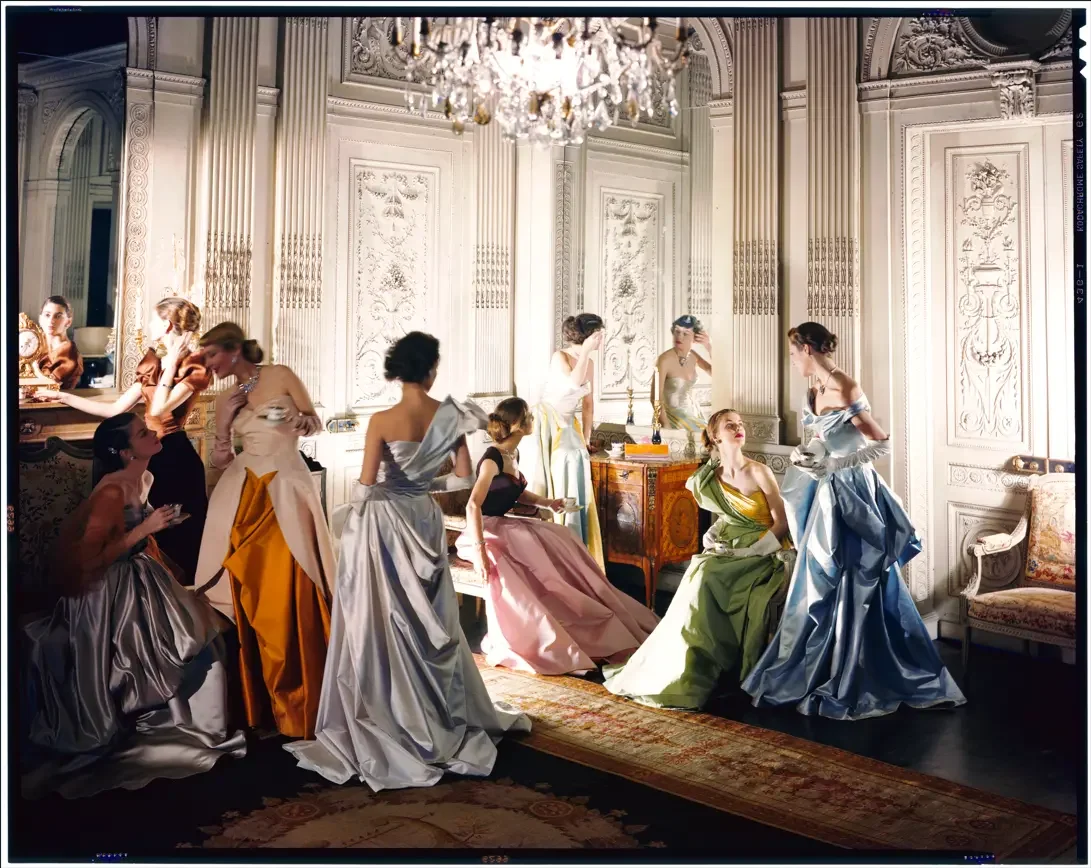Cecil Beaton’s Fashionable World: A Legacy in Light and Glamour
Worldly Colour (Charles James evening dresses), 1948. Original colour transparency. The Cecil Beaton Studio Archive, London
Cecil Beaton’s lens didn’t just capture fashion it shaped it. From 9 October 2025 to 11 January 2026, the London National Portrait Gallery unveils Cecil Beaton’s Fashionable World, the first major exhibition to focus exclusively on the photographer’s pioneering contributions to fashion photography. Curated by Vogue contributing editor Robin Muir, the show is a revelatory deep dive into the discipline that defined Beaton’s early career and laid the foundation for his later triumphs in theatre, film, and royal portraiture.
Beaton’s name is synonymous with elegance, wit, and theatricality. Born in Hampstead in 1904, he began photographing his sisters with a Box Brownie camera at age 12, dressing them in elaborate costumes and staging scenes that hinted at the fantasy-driven style he would later perfect. By 1927, he had secured a contract with Vogue, launching a meteoric rise that would see him become one of the most sought-after photographers of his time.
The exhibition spans Beaton’s golden years from the late 1920s to the mid-1950s charting his evolution from a self-styled dandy to a master of visual storytelling. It features over 200 items, including photographs, sketches, letters, and fashion illustrations, many drawn from the Cecil Beaton Studio Archive and Condé Nast’s vaults.
Beaton’s fashion photography was never just about clothes it was about character, mood, and mise-en-scène. His signature style fused Edwardian stage glamour with the crisp elegance of modernity. He built fantastical sets from wire bed springs, mattresses, and shimmering props, transforming studio shoots into theatrical tableaux. His sitters—ranging from society beauties to Hollywood icons—were lit and styled with a painter’s eye and a playwright’s flair.
Among the standout images are portraits of Audrey Hepburn in costume for My Fair Lady, Elizabeth Taylor in satin and pearls, and Princess Margaret in a Dior ballgown designed for her 21st birthday. These are not mere photographs they are cultural artefacts, capturing the spirit of an era and the personalities who defined it.
Cecil Beaton, by Peter North, 1920s, NPG x30325, © National Portrait Gallery, London
Most famous and enduring quote:
“Perhaps the world's second worst crime is boredom. The first is being a bore.”
The exhibition also revisits Beaton’s early muses the Bright Young Things of 1920s London. Figures like Edith Sitwell and Stephen Tennant helped catapult Beaton into elite artistic circles, where his camera became a passport to high society. His portraits of these flamboyant personalities are imbued with a sense of playful rebellion and romantic nostalgia, setting the tone for his lifelong fascination with beauty and performance.
Beaton’s work with Vogue and Vanity Fair elevated fashion photography to an art form. He didn’t seek psychological depth in his subjects; instead, he celebrated surface, style, and the joy of image-making. As Robin Muir notes, “It’s all about the surface. It’s about the joy of photography”.
Beaton’s influence extended far beyond fashion. He photographed the British Royal Family, including Queen Elizabeth II’s coronation portrait, and won Oscars for his costume design in My Fair Lady. Yet it was fashion photography that gave him his first taste of creative success and it is this discipline that the National Portrait Gallery now honours with unprecedented focus.
Cast Members in costume for My Fair Lady, 1963 by Cecil Beaton, Cecil Beaton Studio Archive, ©Condé Nast
The exhibition is also a tribute to Beaton’s ability to navigate and shape multiple cultural spheres London, Paris, New York, and Hollywood. His images reflect a time when glamour was currency and photography was the medium through which it was minted.
In an age of digital saturation and fleeting trends, Cecil Beaton’s Fashionable World reminds us of the enduring power of crafted imagery. Beaton’s photographs are not just beautiful they are intentional, layered, and emotionally resonant. They speak to a time when fashion was not just worn but performed, and when photography was a gateway to fantasy.
For fashion lovers, photography aficionados, and cultural historians alike, this exhibition is more than a retrospective it’s a celebration of artistry, ambition, and the timeless allure of style.






